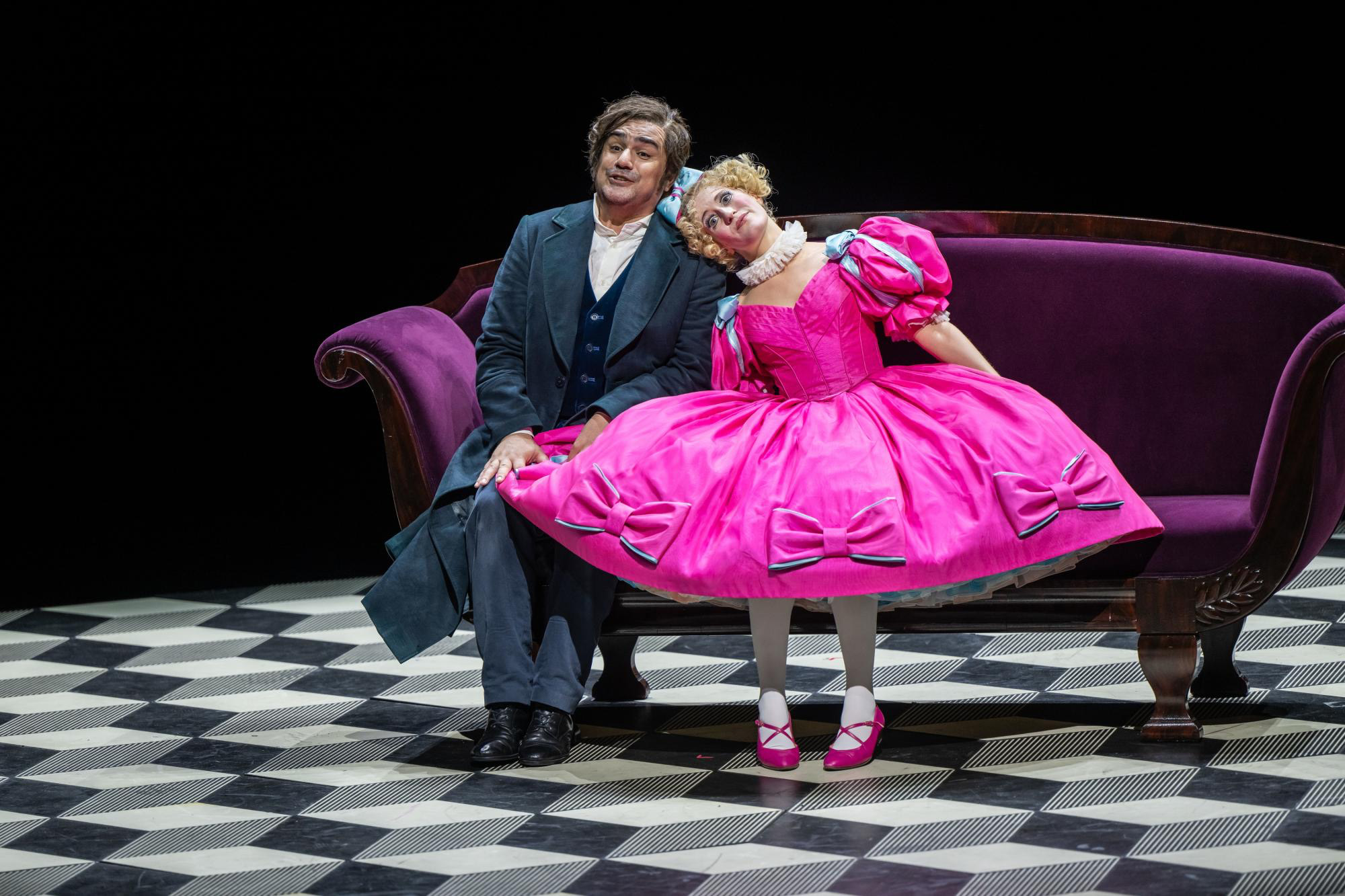 “The Tales of Hoffmann” – Offenbach’s symbolic farewell and greatest work
“The Tales of Hoffmann” – Offenbach’s symbolic farewell and greatest work
A master of wit and parody, French composer Jacques Offenbach is best known for his cheerful operettas, lively cancan dances, and a light-hearted style that delighted Paris for decades. Yet in his final work, “The Tales of Hoffmann,” he surprised audiences with a story steeped in darkness, mystery, and solitude. Both the opera itself and the story of its creation are as captivating as its music.
Near the end of his life, suffering from heart disease and disillusioned by the growing popularity of Wagner and Bizet, Offenbach longed to create something more serious. Tired of being labeled the “operetta jester,” he turned to the figure of E.T.A. Hoffmann – the German Romantic writer who blended dreams, fantasy, and tragic emotion. “The Tales of Hoffmann” was to be a portrait of an artist torn between dreams and reality – just like Offenbach himself. A composer who had journeyed through life with a smile wanted, in his final work, to show audiences that he was more than a clown. “The Tales of Hoffmann” is a musical epitaph — full of longing, horror, and mystery. Offenbach worked on it nearly until his last breath, passing away in October 1880 before he could complete it.
This is where the libretto becomes especially intriguing, as it distills the composer’s deepest fears and fantasies. Hoffmann, an unhappy poet, sits in a tavern and recounts three stories of past loves. He gradually discovers that each of them was both real and imaginary. The first, Olympia, turns out to be a mechanical doll: flawless but soulless, and his infatuation ends in humiliation. The second, Antonia, is a delicate girl whose singing may cost her life; she succumbs to the influence of the demonic Dr. Miracle and dies, as art proves stronger than love. The third, Venetian courtesan Giulietta, seduces Hoffmann only to steal his reflection – a metaphor for his soul. When the poet finishes telling his tales, Stella, his current beloved, leaves with another man. From this heartbreak emerges a decision to devote himself solely to art.
After Offenbach’s death, his friend Ernest Guiraud took on the task of completing the score and preparing the premiere. He stitched together the unfinished fragments, added recitatives, and brought the opera to the stage. Thanks to him, “The Tales of Hoffmann” premiered on February 10, 1881 at the Opéra-Comique in Paris. Poland did not have to wait long: less than two years later, on December 26, 1882, the opera, translated into Polish, premiered at Warsaw’s Grand Theater. Despite public interest, it has never become a repertoire staple. It has been rarely performed mainly because of the immense casting and production challenges: “The Tales of Hoffmann” requires four different sopranos, a large cast of soloists, a full orchestra, and diverse sets. The work itself can be inconsistent – there are various versions and act orders, and its message resists easy interpretation. To this day, singers, conductors, and scholars continue to search for the “true” Hoffmann, reconstructing and refining Offenbach’s opera.
Which raises the question: what exactly is “The Tales of Hoffmann”? An operetta with lofty ambitions, or an opera with a playful heart? Officially, it’s an opéra fantastique – a fairy tale full of horror and drama, though its musical language still echoes the charm and lightness of Offenbach’s earlier works. The famous Doll Song, “Les oiseaux dans la charmille,” sparkles with coloratura and humor, and grotesque or dance-like moments carry that trademark Offenbachian flair. But the rest is a serious tale – about artistic solitude, the tragedy of love and death, and the tension between reality and dream.
On July 12, “The Tales of Hoffmann” will be available to watch for free on the OperaVision platform – this time, it will be the staging from Zurich Opera. Directed by Andreas Homoki and conducted by Antonino Fogliani, the production is based on the edition prepared by Michael Kaye and Jean-Christophe Keck – one of the closest to Offenbach’s intentions. Interestingly, the production premiered online in spring 2021 due to the COVID-19 pandemic. Now, live and in front of an audience, in the final performance of the season, Albanian tenor Saimir Pirgu stars in the title role of Hoffmann, joined by Marina Viotti (Nicklausse), Katrina Galka (Olympia), Adriana Gonzalez (Antonia), Lauren Fagan (Giulietta), and Andrew Foster-Williams in the four villain roles. Sets are by Wolfgang Gussmann, costumes co-designed with Susana Mendoza, and lighting by Franck Evin.
Who? What? Where? When?
“The Tales of Hoffmann” by Jacques Offenbach
Opernhaus Zürich (streaming on OperaVision.eu)
Online premiere | July 12, 2025



